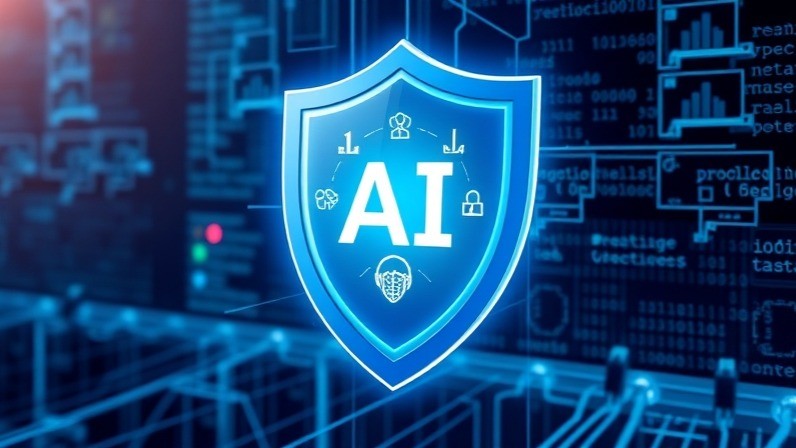In 2025, businesses face a rapidly complex digital landscape where traditional antivirus software is no longer enough to protect important information. Along with developing cyber threats such as ransomware-as-a-service (RaaS), IOT weaknesses and sophisticated phishing campaigns, organizations require a multi-layered safety strategy. Companies like Systmade, which are experts in business consulting and IT solutions, emphasize that modern cybersecurity demands a change in AI-operated protection from reactive, active by reactive defense.
Proceeding from Traditional Antivirus: Rise of Zero Trust Architecture
Traditional antivirus software detects mainly known malware signatures, but the attackers are now taking advantage of advanced theft techniques. Zero-trust architecture has emerged as the cornerstone of modern data security. Instead of securing the internal network, the zero trust applies strict identity verification to each user, device and application regardless of the location. This model reduces the internal formulas of malicious actors within the system, thereby reducing the dangers and lateral movement that some antivirus software cannot achieve alone.

AI and Behavioral Analytics: Replacing Traditional Antivirus
Artificial intelligence (AI) is redefining how businesses combat cyber risks. AI-powered threat detection systems analyze vast datasets in real time, identifying anomalies that suggest malicious activity. When combined with behavioral analytics, organizations can detect unusual patterns such as abnormal login attempts or data transfers before they escalate into breaches. These technologies provide predictive insights, helping enterprises stop threats proactively rather than reactively.
For example, instead of waiting for malware signatures, AI can spot ransomware behavior by detecting suspicious file encryption processes, giving security teams a critical window to respond.
Extended Detection and Response (XDR): A Unified Defense
Another significant advancement in 2025 is extended detection and response (XDR). Unlike siloed security tools, XDR unifies threat detection across endpoints, networks, servers, and cloud workloads. It integrates multiple data sources, giving security teams a holistic view of their environment. This enables faster investigations and automated responses, reducing the time attackers can remain undetected within systems.
XDR not only complements antivirus tools but also provides the orchestration necessary to protect hybrid and multi-cloud infrastructures—now the backbone of many enterprises.
Cloud Security in the Era of Remote Work
With businesses increasingly relying on cloud services for collaboration and storage, cloud security has become a top priority. Attackers often target misconfigured cloud environments and unsecured APIs, leading to costly breaches. By combining encryption, identity access management, and continuous monitoring, organizations can reduce vulnerabilities. Business leaders seeking strategic resilience often turn to firms like Systmade, which offer business consulting tailored to cloud transformation and compliance needs.
The Threat of Ransomware-as-a-Service (RaaS)
Ransomware has evolved into a commoditized service where even non-technical criminals can purchase ready-to-deploy attack kits. This Ransomware-as-a-Service (RaaS) model lowers the barrier for entry, significantly increasing attack volumes. Businesses in 2025 must prepare for ransomware not as a possibility but as an inevitability. Advanced backup solutions, rapid recovery frameworks, and autonomous security tools are critical in minimizing downtime and financial loss.
IoT Vulnerabilities and Autonomous Security Tools:
As more equipment – from smart sensors to industrial machines – connects to the network, IOT weaknesses face new challenges. Many IOT devices lack proper safety updates, making them an entry point for attackers. To reduce risks, organizations are adopting autonomous safety equipment, Able to monitor closing points, divide the network and automatically respond to the equipment made without compromise without human intervention.
These self-healing tools reduce the reaction time and prevent extending violations, a requirement in the era of a hyper-connected business environment.
Ensuring data privacy compliance:
Pressure is increasing on organizations to effectively manage data privacy compliance to global rules such as GDPR, India’s DPDP Act, and sector-specific compliance standards. Non-transportation is not only the result of financial punishment, but also damages the customer’s trust. Modern compliance strategies should integrate with a safety structure, ensuring that individual and business data remains preserved within limitations and platforms.
Preparing for the Quantum Era with Quantum-Resistant Cryptography
Furthermore, the rise of quantum computing is a threat to the traditional encryption algorithm. Forward-holding businesses are beginning to detect quantum-resistant cryptography for future-proof sensitive information. By adopting encryption methods to face quantum decrying efforts, companies can secure long-term privacy, especially for intellectual property and financial data.
Conclusion:
Protecting commercial data in 2025 demands far more than traditional antivirus tools. From the detection of zero trust architecture and AI-operated danger to XDR, cloud security and quantum-resistant cryptography, enterprises should embrace a layered defense strategy. RAAS, IOT weaknesses and increasing risks of global compliance pressures are further exposed to active, autonomous solutions.
Organizations that align cybersecurity with business consulting expertise, such as services offered by Systmade, can be ahead of the increasing dangers. By adopting state-of-the-art equipment and a holistic strategy, businesses can protect their data, preserve confidence, and maintain flexibility in the digital-first future.


Hi, this is a comment.
To get started with moderating, editing, and deleting comments, please visit the Comments screen in the dashboard.
Commenter avatars come from Gravatar.